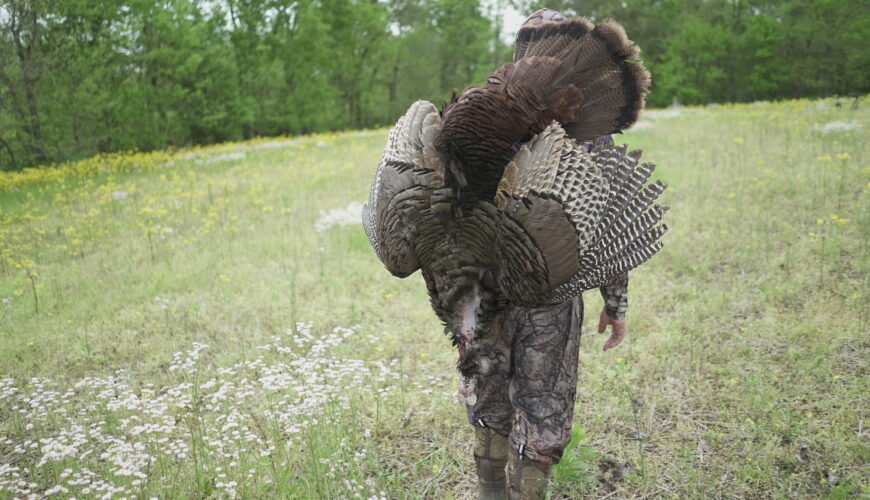Tactics
Trail Camera Strategies for Whitetails
October 30, 2025 •Doug Howlett
DST Ends November 2, 2025. The iSportsman system may experience technical difficulties at this time. View system updates here.
September 24, 2024
Hunters are always looking for their next big hunt, and for turkey hunters, few achievements stand taller than completing the Grand Slam of Turkeys. It’s not just a test of skill, patience, and persistence, but a journey across the country, through diverse landscapes, chasing four unique species of this magnificent bird. Here’s everything you need to know about the achievement, and how to conquer this legendary slam.
The Grand Slam of Turkeys (make sure not to confuse it with the Royal Slam, or the more famous Grand Slam) is a prestigious accomplishment in the world of turkey hunting. To complete it, hunters must harvest each of the four primary wild turkey subspecies found in the U.S.:
Each bird offers its own challenge and unique hunting experience, making the Grand Slam a worthwhile experience for serious turkey hunters.
The Eastern wild turkey is the most common subspecies and can be found in 38 states, primarily in the eastern U.S. This bird is the largest of the four, sporting a dark plumage with bronze, green, and copper iridescence. Its gobble is loud and deep, known to echo across the hardwood forests and dense thickets of the East.
Where to hunt: From the forests of Pennsylvania to the swamps of Georgia, you’ll find Eastern turkeys thriving all over the eastern U.S.A. States like Missouri and Kentucky are often at the top the list for chasing these birds.
Also known as the Florida wild turkey, the Osceola is smaller and darker than the Eastern, with wing feathers that are more black than white. This bird is only found in the peninsula of Florida, making it a rare prize for those gunning for a Grand Slam.
Where to hunt: Central and southern Florida is where you’ll need to go: Be ready to navigate dense swamps and palmetto scrub when tracking this elusive bird.
The Rio Grande wild turkey enjoys the dry, open landscapes of the central and southern U.S. This bird prefers prairie habitats and has lighter tips on its tail than other subspecies. The Rio Grande turkey often travels in large flocks and can cover a lot of ground.
Where to hunt: Head to Texas, Oklahoma, Kansas, or Nebraska. The wide-open terrain means a different kind of hunting strategy — you’ll likely be doing a lot of glassing and covering ground.
Finally, we have the Merriam’s wild turkey, possibly the most visually striking of the four. Its tail feathers feature bright white tips, and it’s primarily found in the mountainous regions of the western U.S. The Merriam’s gobble is known to echo across the canyons and ridges of its habitat, adding an extra layer of mystique to the hunt.
Where to hunt: The Black Hills of South Dakota and Wyoming are prime Merriam’s territory. You’ll also find them in Montana, Colorado, and New Mexico.
Completing the Grand Slam of Turkeys is an admirable achievement for any turkey hunter. For those who manage to complete it, it represents the pinnacle of turkey hunting. Just be prepared for the work and the miles, then you can enjoy all the stories that’ll come from it.
Good luck out there, and happy hunting!
